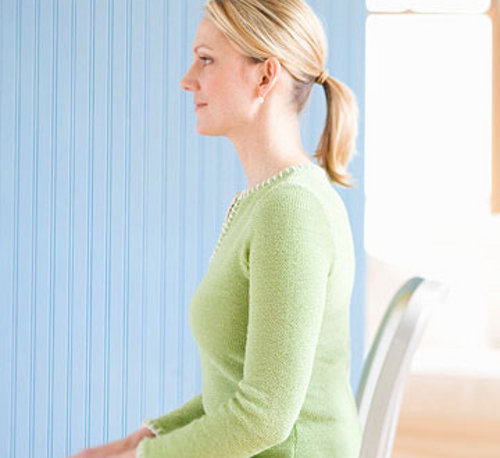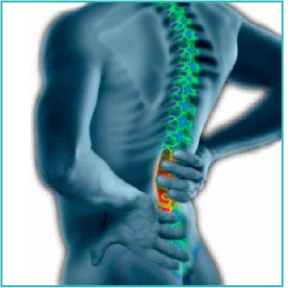 Good posture is not only essential for day-to-day activities but also during weight training. When one part of your body is out of alignment then another part has to compensate, creating an increased risk for injury, decreased efficiency in performance, and a muscle imbalance throughout the body.
Good posture is not only essential for day-to-day activities but also during weight training. When one part of your body is out of alignment then another part has to compensate, creating an increased risk for injury, decreased efficiency in performance, and a muscle imbalance throughout the body.
Over training can lead to poor posture. For example, if one over trains the chest muscles (which usually means under trained back muscles), the result is rounded shoulders. Physical therapists call this upper cross syndrome.
So what is “good posture?” The American Physical Therapy Association (APTA) defines good posture as, “the state of muscular and skeletal balance which protects the supporting structures of the body against injury or progressive deformity irrespective of the attitude in which these structures are working or resting.”
Posture is not only essential for proper form and function, but also something other people notice about you. By maintaining good posture you can stand out in a crowd, look taller and slimmer, and most importantly portray self-confidence. All these qualities are important for the workplace and your social life.
First Address Muscular Imbalances
 When addressing poor posture, first find out where your muscular imbalances are. If you train with poor posture then you are training your muscular imbalances to become stronger. In order to break this vicious cycle you need to find where you postural problems are and then strengthen those areas.
When addressing poor posture, first find out where your muscular imbalances are. If you train with poor posture then you are training your muscular imbalances to become stronger. In order to break this vicious cycle you need to find where you postural problems are and then strengthen those areas.
To check your posture you must stand facing a full-length mirror, wearing minimal clothing. Now close your eyes and move your head around. Also shake your arms and take a deep breath in. This is to relax your body, so you can see what your true posture is like. Now open your eyes and look forward — this is your natural posture.
Try looking around at your body by moving only your eyes. Does one hip or shoulder look higher then the other? Is one foot pointed inward or outward? Let your hands just hang naturally by your sides and check to see if one arm is lower then the other.These are all signs of muscular imbalances. Write down what you saw for reference.
Now turn to one side and repeat the process again, making sure that when you open your eyes you do not change your head’s alignment. Now walk backwards until you touch the back wall, take note of what body parts touch the wall. Proper posture consists of the mid back, back side of head, and glutes all touching part of the wall slightly. Now you know what areas need to be addressed.
Common Problems
One of the most common problems with posture is when your head is shifted forward. Some people suffer from headaches and stiffness in the neck because of this. This happens to people that spend a great deal of time behind computers, sit at desks all day, or drive long distances. There are a couple of adjustments to your workout routine that can help fix this problem.
Another frequent postural problem is rounded shoulders. I discussed this earlier; it is due to tight chest muscles and weaker back muscles. Your shoulders are pulled forward by the tight pectoral muscles, leaving your back rounded.
The last frequent postural problem is the anterior pelvic tilt. People usually experience pain and soreness in their lower backs. Sometimes people look like they have belly fat even if they have none because an anterior pelvic tilt tends to push your abs outward. This is due to tight hip flexors, which is common in runners, cyclists, and weightlifters.
Exercises For Postural Correction
 Here are some great exercises to incorporate into your strength training routine. Remember that correcting your postural imbalances is essential to achieving maximal strength and muscle mass. The body is most efficient when its postural alignment is correct, allowing your muscles to work to full capacity.
Here are some great exercises to incorporate into your strength training routine. Remember that correcting your postural imbalances is essential to achieving maximal strength and muscle mass. The body is most efficient when its postural alignment is correct, allowing your muscles to work to full capacity.
• Chin Tucks – Sit up nice and tall on the edge of a bench with feet flat on the ground. Arms should be relaxed with hands resting on the legs. Now, only move your head, and drop your chin down and in, toward your neck and then release. Repeat 10 times for 3 sets. This exercise can be done daily.
• Reverse Fly – Lie face down on a bench with head pointing down and chin tucked on bench. Arms should be down by your sides with a dumbbell in each hand. Now slowly raise the weights, squeezing your shoulder blades together until your arms at shoulder height, then release. Repeat for 12 to 15 reps.
• Seated Rows – Sit at seated row machine with feet on blocks and legs bent at a 45-degree angle. Body should be perpendicular to the bench. Grab handles and pull back, ensuring that your elbows to stay close to your body. Focus on squeezing your shoulder blades together to bring the weight back. Release and repeat for 12 to 15 reps.
• Swiss Ball L Raise – Lie face down on a stability ball. Your back should be flat and your chest should be slightly off the ball. Relax your arms straight down with palms facing behind you. Now lift your upper arms as high as you can, keeping your elbows pointed outwards. With upper arms up, rotate your forearms up and back as far as possible. Hold for 5 seconds, then release. Repeat 12 times.
• Bridge On Stability Ball – Lie on your back on a mat. Place your feet flat on the ball with knees bent. Now press through the heels and your glutes, lifting your hips up toward the ceiling. Keep the ball still and hold for 5 second and then release allowing your hips to come close to the floor but not all the way down. Repeat 15 times for 3 sets.
Posture Is Key
Good posture is not only good for your muscles and bones, but is also beneficial to your body image, self-confidence, overall health, and breathing. With good posture your body is able to work efficiently and you will see great strength and muscle gains.
Start now by incorporating these moves into your daily workouts to correct any muscle imbalances you may have. Soon it will feel almost effortless to maintain good posture, and your neck and back will be pain-free!